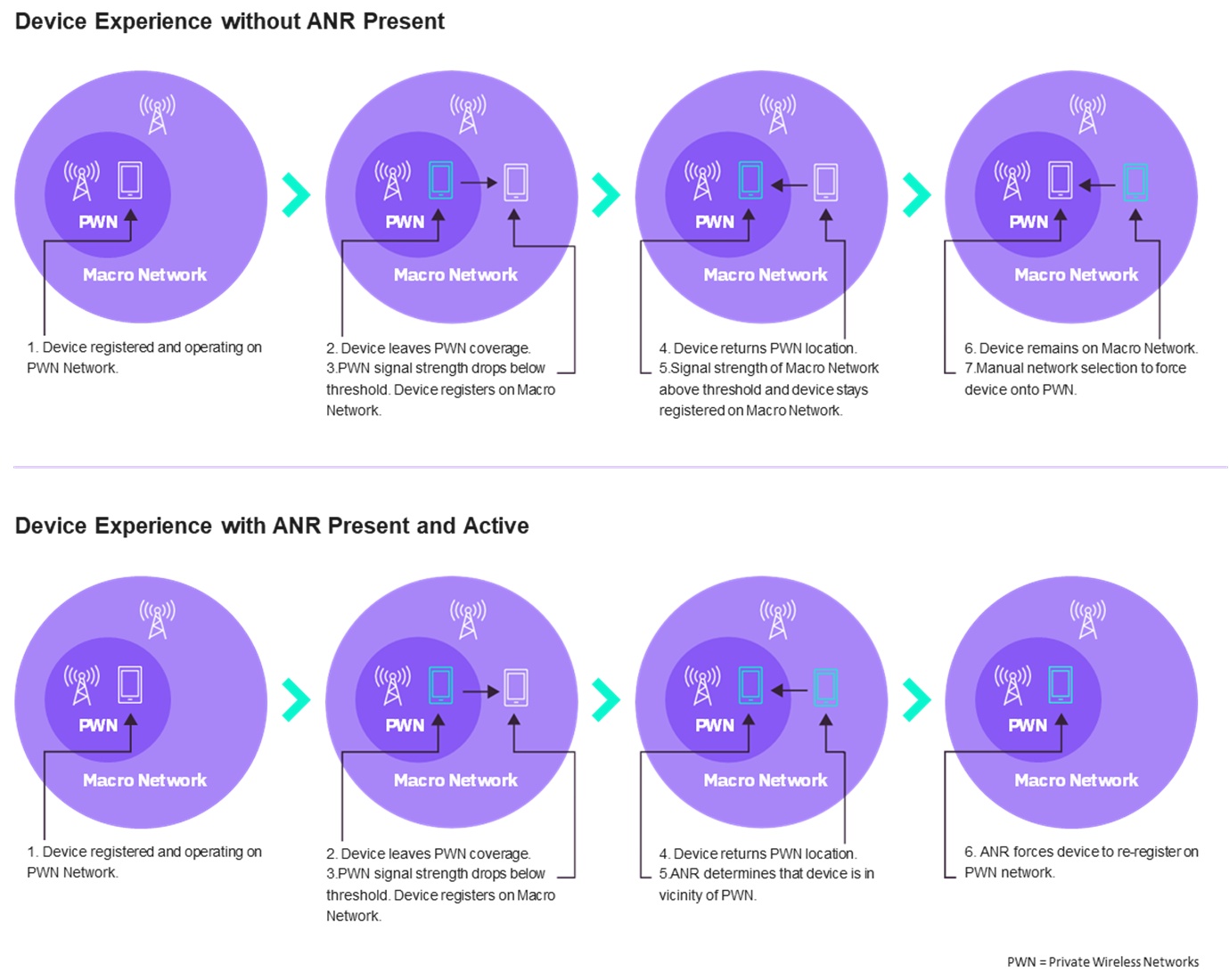Industry Thought Leadership
Enabling Private Network Interoperability with Public Networks
July, 2022Private wireless networks are driving innovation across multiple industries from manufacturing to healthcare and beyond, enabling enterprises to harness data quickly, securely, and more accurately. And ultimately, leading to faster and better decision making.
Enterprise private cellular networks, concentrating largely on broadband applications in industries such as education, manufacturing, health care, public venues, office campuses, and retail locations had an estimated market of $1.7 billion in 2021. The market is expected to grow at a CAGR of 36%, reaching $8.3 billion by 2026, according to IDC1. These private wireless networks offer enterprises wireless connectivity beyond that of WiFi, supporting a multitude of stationary Internet of Things (IoT) and mobile devices with expanded capacity, bandwidth, the promise of lower latency and, as required, mobility beyond the premise.
However, many of these IoT devices may not remain sedentary; they might be nomadic and require connectivity beyond the private network as they traverse both regionally and internationally. Device communication is then required past the confines of the private network and into different networks creating a connected world. Maintaining seamless and secure connection from a local private network as it transitions onto a public network is becoming increasingly crucial to many applications – from transportation to logistics to college campuses and medical facilities.
Additionally, having the power to maintain data integrity by keeping information originating within a private network secure as it moves from the sanctity of the private network to an external application, completely avoiding the public internet, is a tremendous advantage for organizations looking to maintain a level of security and network performance.
With that said, there are challenges associated with the implementation and enablement of private networks that both enterprises and operators are facing. For enterprises, it is the need to navigate a new modern communication backbone to enable the cellular connectivity both locally and beyond the boundaries of their properties. For mobile operators, it is the capability to manage the overwhelming influx of private network requests and relationships. It is critical for enterprises to establish both a functioning private wireless network that not only provides the infrastructure, management, and capabilities of a cellular network, but to also have the ability to support mobile devices as they roam between the private and public networks.
Let’s look at manufacturing. A large automobile manufacturer will have multiple manufacturing facilities located both regionally and likely internationally. Each location manufactures components which are then shipped to other locations, eventually arriving at a final assembly location.
Within each location, private networks support the communication needs a modern smart factory requires. Communication infrastructure enables automation, which in turn drives process speeds while maintaining costs. Asset monitoring is critical in these cases, along with visibility into maintenance issues.

How ANR plays a critical role in registering mobile devices on a private and macro network.
Using a hosted and managed International Mobile Subscriber Identity (IMSI) and Subscriber Identity Module (SIM) is vital to device communication and establishing productive collaboration with the private network location.
Connectivity outside the private network is increasingly critical. Manufactured parts from one location shipped to the next location will leave the coverage of the private network. Roaming with the macro network extends connectivity beyond the factory. Parts can be identified, tracked, and monitored with the implementation of a hybrid model. This private-public inter-operability is now possible with seamless and secure connectivity provided by Syniverse’s Private Wireless Solution.
For mobile devices that enter a private network that resides within a larger public network’s cellular footprint, the ability for this device to seamlessly move between networks is essential to ensure data captured from the device remains within the domain of the private wireless network. A device activated within overlapping private and public network coverage may register to the public cellular network and not register to the private network. As a result, users will need to manually register to the private network, a step that is typically not possible for IoT devices.Achieving automated switching from one network to another when appropriate conditions are met and maintaining communication sessions at the application level are key to establishing superior experience levels for both users and IoT devices.
To accomplish this, Syniverse has developed and patented a technology called Automated Network Reselection (ANR). ANR enables a mobile device with a single SIM to reconnect to its designated private mobile network upon return from the public macro network. ANR’s functionality solves the challenge of network selection when private and public networks have overlapping coverage.
ANR is a vital feature within Syniverse’s Private Wireless Network solution along with Global SIM with Multi-IMSI support and Mobile Policy Control Center.
The benefits of private wireless networks will continue to make them attractive for various sectors across enterprises and beyond. While the isolation they offer allows the allocation of inherently secure bandwidth for local devices, it also creates private network islands – a challenge for devices needing the flexibility to roam beyond the local network’s border. Implementing capabilities that permit connected devices to roam both domestically and internationally and seamlessly reconnect to the private network resolves critical communications issues will be important as the world becomes increasingly more connected through the current 4G and quickly growing 5G platforms.
About the author:
Kathiravan is a Senior Product Management Director in the Carrier Business Unit of Syniverse. He is responsible for the management and growth of products that form Syniverse’s IoT and Private Wireless pillars. These ‘Next Generation Solutions’ drive the development of emerging connectivity products, such as Global SIM & eSIM, Private LTE, Sponsored Roaming, Open Connectivity Complete and Secure Global Access, and combine them in seamless ways to support various IoT use cases.
Kathiravan has been in the telecommunications industry for over 20 years and has been deployed around the world to deliver products and services, specializing in new product introduction. He has a bachelor’s degree in computing (Hons) from University of Portsmouth, UK, and has been PMP certified since 2009.

